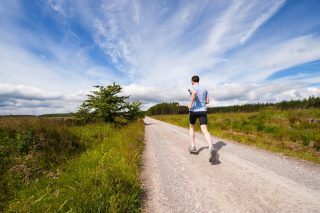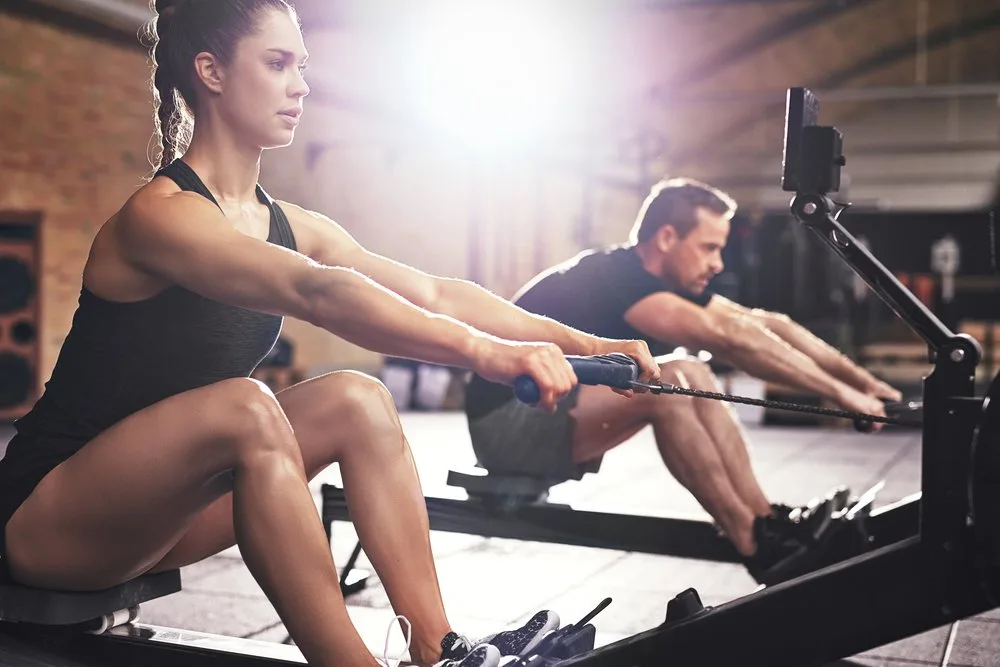For decades, medical-grade compression socks have been used to combat deep vein thrombosis, or the formation of blood clots. By increasing circulation and blood flow, research has found the socks to be effective for bed-ridden and inactive patients. However, more and more athletes are using compression socks for their post work out recovery.
Compression Socks Have More Uses Than You Think
Modern compression socks were invented by Conrad Jobst, a German engineer who suffered from varicose veins. He discovered that when he was in a pool, his legs felt better due to the pressure from the water. He developed precision gun sights for the U.S. during the First World War and patented a car sunroof. However, compression socks, which he invented around 1950, are his most successful achievement.
Compression Socks Are Not Just for Varicose Veins
Compression socks work by countering hydrostatic pressure in the wearer’s legs—that is, the bulging of the veins and tissues caused by fluid that’s been pulled down to the extremities and can’t get up. Runners are always looking for the next best thing to boost their performance on the track. Contracting muscles boost the blood movement right from the lower legs into your heart. The faster and the more blood you can get your lower legs and back into regular circulation, the more blood is going to get scrubbed. It will have all the repercussions of exercises and injuries cleaned out.
Your Muscles Take Strain
Your body jiggles when you run and there is a certain amount of vibration that occurs. Your muscles need to tune into the environment you’re running on. If you are running on a hard road, a bigger shock wave travels up your system, making your muscles work a lot harder. The more your muscles need to make adjustments, the higher the chances of sustaining injuries. But there are great benefits to wearing the right gear when running. Read on to learn more.
6 Benefits of Compression Socks for Recovery:
-
Cures Shin Splints and Bruises
You may end up tearing your muscles way too much that result in a strain or a sprain. If you are a runner, you may experience shin splints, which is an acute pain right behind your shins. Compression socks effectively treat shin splints and bruises to speed up your treatment time. When combined with analgesics, compression socks reduce swelling and promote quick healing.
-
Reduces Pain and Swelling
With all the athletic training, gravity combined with poor circulation is an everyday post workout. You are more likely to overwork the muscles in your feet and legs after an intensive workout. And chances are your legs will suffer hours of swelling and poor circulation. While most athletes think the swelling stems from pain, it is the other way round.
With a well-designed pair of compression socks, the arches of your feet feel a tighter squeeze than your calves. This gives the blood an extra boost against gravity and all the painful swelling is put to rest.
-
Regulates Blood Flow and Avoids Sudden Cramping
Compression socks effectively regulate blood circulation. Your blood transports oxygen to your muscles, so your recovery time after a workout is automatically reduced.
-
Helps Runners Retain Muscular Power
One of the most important post-running recovery tips is retaining muscle power. Constantly running can break down muscle tissue. But this breakdown is mandatory to help muscles grow a lot stronger during the recovery period. Initially, compression socks may leave your feet and legs feeling sore. But soreness is a major reason why many runners find that their bodies adapt and grow a lot stronger for consecutive runs.

Reduces Lactic Acid Build-up in Muscles
The right gear improves blood flow and reduces the build-up of lactic acid in your leg muscles. The full foot to toe coverage works best for post workout recovery to ensure you keep performing better.
-
Reduces the Risk of Chafing and Muscle Soreness
Runners should avoid wearing poorly fit socks since they lead to poor circulation in your feet and legs. And unless you are wearing the right gear, you will experience the occasional strain.
7. Reduces Increased Moisture on Feet
Athletes invest plenty of hours to perfect their game on the track. Compression socks keep moisture and bacteria at bay and prevent your socks from constantly running against your shoe soles. Not just that, the right gear also reduces your chances of sustaining blisters all over your feet.
Sore and weak muscles are an inevitable part of a workout. But the addition of copper compression socks to fitness gear takes you a step closer to goal. Whether it’s a sudden cramp or lactic acid build-up, the right gear gives your performance on track for a major boost!
Who else should use compression socks?
- People with or at risk for circulation problems, like DVT, varicose veins, or diabetes
- People who’ve just gotten surgery
- Those who can’t leave their bed or have a hard time moving their legs
- People who stand all day at work
- Pregnant women
- People who spend long stretches of time on air planes, like pilots
Author BIO:
Kunal is a young and passionate entrepreneur. He writes stories to help people find natural solutions for common health problems.



![women [longevity live]](https://longevitylive.com/wp-content/uploads/2020/01/photo-of-women-walking-down-the-street-1116984-100x100.jpg)











Good summary of the many benefits that are offered by graduated compression socks. Im an avid runner and have started using compression socks over a year ago – and oh boy, they do make a difference. The key is to find the right compression level for yourself as well as ensure you get the right size (in no circumstances the socks must cover your knee and block the blood flow). I’ve tried many brands and currently prefer to use azengear compression socks – they are a growing brand but offer the best price/quality ratio in my opinion.